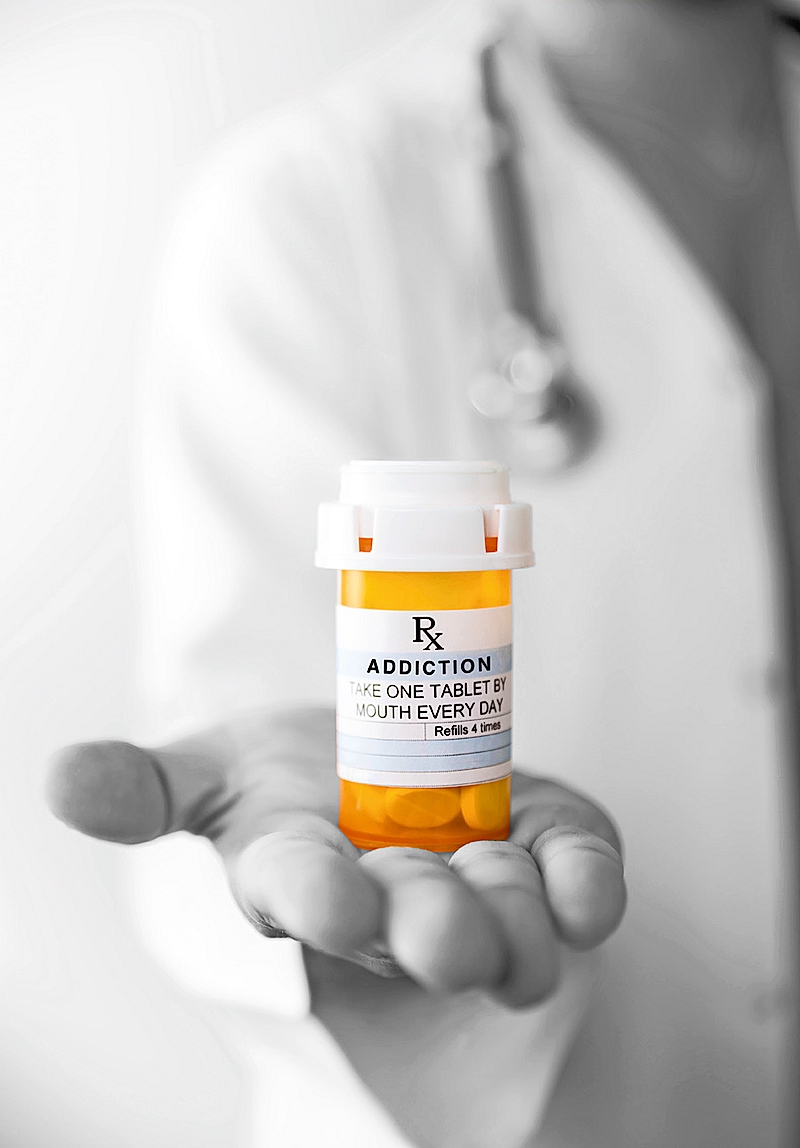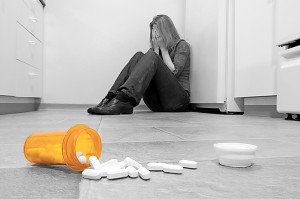Painkillers Not What the Doctor Ordered—The Gateway Drug to Heroin in Your Medicine Cabinet
By Rachelle Stoller
May 2016 View more Featured
 With heroin addiction continuing to increase in epidemic proportions, more and more organizations are bringing to light the connection between prescription painkillers and heroin abuse. Especially when you consider that as many as 80 percent of heroin users were first addicted to prescription painkillers, according to the U.S. Substance Abuse and Mental Health Services Administration.
With heroin addiction continuing to increase in epidemic proportions, more and more organizations are bringing to light the connection between prescription painkillers and heroin abuse. Especially when you consider that as many as 80 percent of heroin users were first addicted to prescription painkillers, according to the U.S. Substance Abuse and Mental Health Services Administration.
In 2014, the Center for Disease Control and Prevention reported drug overdose as the leading cause of accidental death in the United States. Prescription painkiller overdose accounted for 18,983 of those deaths and heroin overdose accounted for 10,574. Here in DuPage County, 43 deaths were reported due to heroin addiction in 2015. Of those deaths, 26 were individuals between the ages of 15 and 29 and five of them were under 19 years old, as reported by the DuPage Coalition Against Heroin.
Those figures are definitely attention grabbing. In a June 2015 article, Sports Illustrated reported the findings of an independent investigation into the relationship between youth sports injuries requiring prescription pain relievers and heroin overdose. The article, titled “How Painkillers Are Turning Young Athletes into Heroin Addicts,” identified heroin overdose victims in virtually every sport, across the nation.
Not What the Doctor Ordered
“Many kids, and even adults, have the misconception that if it comes from a doctor, a drug is safe to take; unlike a street drug,” said Kris Adzia, director of education at Hinsdale’s Robert Crown Center. The agency focuses on primary prevention of substance abuse, teen pregnancy and sexually transmitted disease through education and outreach. Adzia adds that we also live in a society that views pain as bad. That means patients can often take prescription painkillers longer than they actually need to take them.
Teens can easily access prescription painkillers in their parents’ medicine cabinet. “It’s not unusual for a family cabinet to have leftover prescriptions,” says Adzia. “Kids don’t understand the dangers of using them, so they make their way to parties and are even sold on the street.” For young people who struggle with mental health issues, taking a prescription drug to numb themselves does not have the same stigma as taking illicit drugs.
An alarming 64 percent of teenagers 12-17, who have abused painkillers, say they got them from friends or relatives, in many cases without the other person’s knowledge, according to statistics from lockthecabinet.com. The most commonly abused prescription drugs, according to the Substance Abuse and Mental Health Services Administration (SAMHSA) are Vicodin, OxyContin, Percocet, Darvocet and Tylenol with codeine.
How Addiction Happens
An important element to understand when it comes to prescription painkillers is how addictive they can become. Addiction is defined by the National Institute of Drug Abuse (NIDA) as a chronic, relapsing brain disease characterized by compulsive drug seeking and use, despite the consequences. Using painkillers over long periods of time causes the body to adapt and develop a tolerance, requiring more of the drug to avoid withdrawal symptoms such as restlessness, muscle and bone pain, insomnia, diarrhea, vomiting, cold flashes with goose bumps, and involuntary leg movements. Eventually, users cannot make it through the day without the drug.
The Jump to Heroin
So, how does a prescription painkiller addict become a heroin addict? Easy, says Adzia. Commonly prescribed painkillers such as Vicodin, Percocet and OxyContin are in the same family of opioids as heroine. When painkiller addiction sets in, users take more and more pills. Even doing that doesn’t often give them what they need, according to Adzia. So, they resort to crushing the pills and snorting them. Then there is the issue of cost. Prescription painkillers can cost up to $30 per pill, where as heroin can be bought for as little as $5 a bag and is much stronger. Users can easily transition from snorting crushed pills to snorting heroin and get a significantly more intense high.
 What Can You Do?
What Can You Do?
“Talk to your children,” said Adzia. “Educate them from an early age.” Through their outreach and education programs, the Robert Crown Center works with schools, teachers, parents and students to help them understand the dangers of becoming addicted to painkillers. “We talk to kids about the fact that addiction happens over time and we don’t know if they will become addicted,” she says. “Part of the conversation is that it is a Russian roulette. Scaring kids doesn’t work. They need to understand the risks they are taking.”
One of the key messages in the agency’s parent and school programs is encouraging that communication. She recommends starting simple with very young children, but a kindergartner should know that the medicine they are getting should only be taken with mom or dad. Adzia suggests showing them how much one dose is so they have a basis for later conversations about not taking too much of any medication.
“Older children should know that a little pain is okay,” said Adzia. She also recommends talking with kids about stressors and coping skills that may work for pain other than taking a pill.
For teenagers, talk about what substance abuse is and what happens when they make risky choices. “Parents shy away from having conversations about drugs,” Adzia notes. “They can feel guilty because they may have an occasional drink or have taken painkillers, themselves, for an injury. But kids need to understand that their brains are different and that they can react to drugs in a negative way.”
She also stresses the importance for parents to set an expectation that taking drugs, even prescription drugs beyond the point of pain relief, is not okay.
Clean Out Your Cabinet
Adzia suggests adults take advantage of Drug Take Back programs to get unused prescriptions out of their medicine cabinets. In additional to annual National Drug Take Back events—the most recent one was in February of this year—most fire houses and police stations have a drop box for unused prescription pills. This ensures that the drugs are disposed of safely without damaging the environment.
“We know addiction is a problem that needs a lot of touch points,” says Adzia. “We are part of a bigger picture and we need to look out for each other as a community.”


